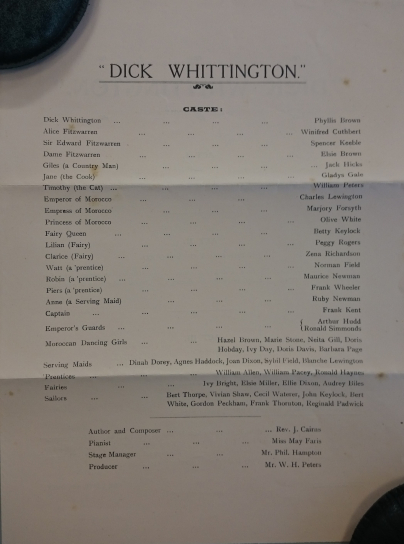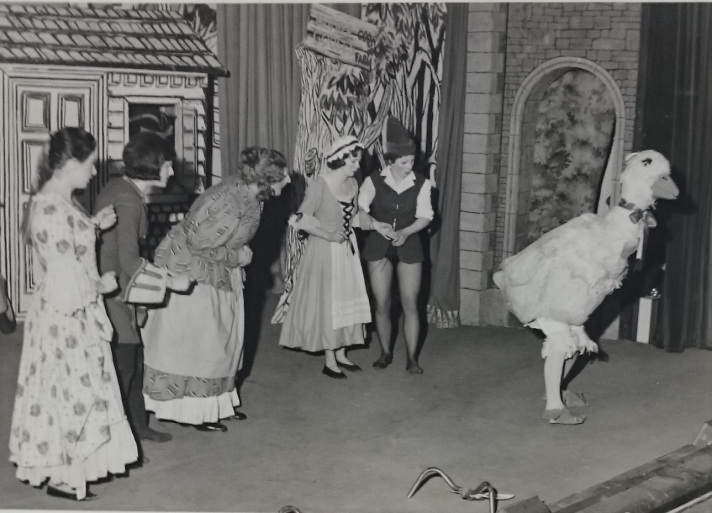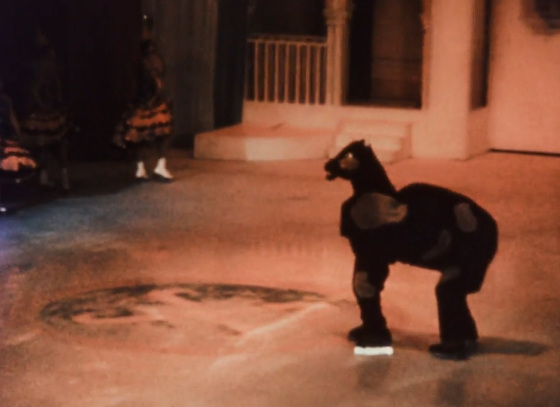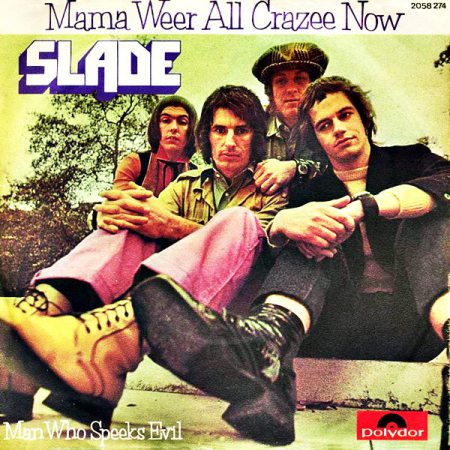Welcome back after the interval to Pantomime in the archives. I hope you enjoyed your ice cream and are sitting comfortably waiting for the curtain to rise.
Alongside pantomimes at professional theatres, amateur productions have been enjoyed by both audience and performers alike for many years.We have many parish scrapbooks and photographs of local pantomimes to conjure up memories. Sometimes amateur productions were written up in the local press. 105A07W/3/3 On 8 January 1921, The Hampshire Observer reviewed the Vicar of Hyde, Revd James Cairns’ own composition, a pantomime entitled The Princess and the Plumber. Rev Cairns was vicar of St Bartholomew Hyde, Winchester, from 1917 to 1927, and I’m guessing he may have been a fellow pantomime enthusiast. In the parish collection there is an envelope 105A07W/3/1 labelled ‘Pantomime Records’, which contain his papers in connection with Christmas pantomimes performed by the Parish Players at Hyde Hall and Winchester Guildhall. One of the productions, Cinderella, in 1924, was seen by 1200 people!
Revd Cairns (‘Author-Composer’) adapted the stories and arranged the music for these productions, and profits went towards parochial causes such as Hyde School, or the upkeep of the parish hall.

The envelope includes cuttings and programmes with cast lists. In Little Red Riding Hood, in 1926, Winnie Cuthbert played Prince Rudolf, so there was a principal boy, and a review complimented her singing. Master Billie Peters played the wolf, another animal pantomime role. He also appeared as Timothy the Cat in a programme for Dick Whittington, so I wonder if he feared being typecast? There must have been a male chorus, representing gnomes, as a newspaper review commented ‘only those who have actual experience of getting boys to dance at all can fully appreciate the achievement this spontaneous quaint and happy dance represents’! Every member of the cast and crew got a mention, and ‘no local pantomime has been more lavishly staged’. A newspaper advert for Dick Whittington in 1925 highlights another feature of pantomime, the ‘topical “gags”’.
The envelope also contains an illustrated price list for Potterton’s Theatrical Costumiers, St Martin’s Lane, London (who supplied, amongst other items, medals, swords and fairy wings!),


The archives of Winchester Dramatic Society (now based at the Chesil Theatre) contain records of a number of its pantomime productions, starting with its first, Dick Whittington, in 1956 90A04W/A2/1.

The Society’s scrapbooks contain programmes, photographs and newscuttings. These images, from Sleeping Beauty (1961) show the moment when the heroine is tempted to use a spinning wheel by the wicked fairy, and also the final walk down (curtain call). Note the patch of white just in front of the princess’ feet, which suggests flour had been thrown earlier!


These photographs from Mother Goose in 1963 show super costumes for Priscilla, and also the dame.
 The same scrapbook even contains a watercolour of the planned scenery for Robinson Crusoe (1958).
The same scrapbook even contains a watercolour of the planned scenery for Robinson Crusoe (1958).

Many amateur productions feature in the collections of Wessex Film and Sound Archive (WFSA). Lively colour excerpts survive from Fleet parish pantomimes of 1962 (Mother Goose, complete with dame, principal boy, a child goose and goose chorus, and 1963 (Sinbad the Sailor). The latter is accompanied by a filmed enactment of the preparation for the production, from rehearsals to set building.
WFSA oral history collections include a recording of Mrs Constance Young (née Barrow Simonds), made on 11 Dec 1969 AV12/19/S1 with a description of the pantomime in the Guildhall, Winchester, which, given that the interviewee was born at Abbotts Barton 100 years previously, presumably dates the description to some time in the 1870s, which is another early example of detail about a production.
School pantomimes involve staff and pupils, and a record of the efforts of two schools are part of the WFSA collections. The Deanery School shot 16mm film footage in the early 1970s, including its pantomime, probably Aladdin. The footage outlines the preparations, such as children painting the scenery, acting, singing and technical rehearsals. There are also shots of the final production, accompanied by an outdoor shot, in which a boy in a rickshaw pulled by two other children, and other cyclists, all in Chinese costume, visit the equivalent of a car wash for rickshaws, and throw soapy water over each other – a great example of a pantomime fixture, the splosh scene, which involves characters getting wet or covered in custard pies! Shooting this outside avoids the need for a large tarpaulin on the stage!
Oak Farm Community School in Farnborough produced and filmed pantomimes, including the curiously-titled Cinderhood in 1997. This is described in the footage as the brainchild of 3 Year 11 girls, who persuaded teaching staff to put on a pantomime. The cast was huge – 300 auditioned and 200 had parts. The production included at least 3 dames, random characters from other pantomime stories, and a send-up of The Full Monty, as the film had been released in August of that year.
Froyle and Somborne village filmmakers covered their pantomimes, and in an oral history recording from Froyle in 2003, the interviewee talks about how the pantomime brought every age together, and she also remembers a power cut on the night of one performance!
A particularly spectacular variation on the pantomime theme is covered amongst the 16mm amateur cinefilms of Deane Clark and his father. In 1955 and 1956, the King’s Theatre, Southsea showed a pantomime on ice. The footage is quite dark, so it is difficult to tell how this was achieved. Synthetic ice seems to be a slightly later development, but the cast is certainly skating on stage, as the dame melodramatically falls into the orchestra pit at one point!
The last item in my selection box is clearer example of pantomime on ice. The still shows a pantomime cow on ice in Bournemouth in 1961. The pantomime must be Jack and the Beanstalk, if it includes a cow. The scene is from AV148/5 Enchanting Bournemouth, a professional film commissioned by Bournemouth Corporation to promote tourism to the area.


Pantomimes usually finish with an audience sing-song co-ordinated by the comic character in front of the curtain. This gives the crew the chance to set the final scene behind the curtain while the cast change into their finery for the walk down and bow.
So, to thunderous applause (possibly), I shall bring the curtain down on my pantomime selection. If you do go to a pantomime this festive season, I hope you enjoy it, including the audience participation! I would be delighted if you would like to add memories of your favourite pantomime in the comments box below.
Heather Needham, Archivist
Advertisements Share this:




